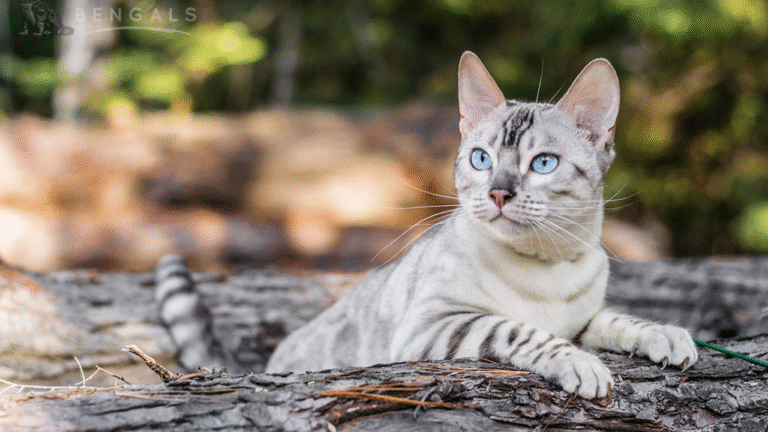So you’ve stumbled upon the exotic beauty of the Bengal kitten and fallen in love? Join the club. These little leopard lookalikes are stealing hearts worldwide—and for good reason. But owning one isn’t all glamour and purrs. Let’s dive deep into what makes the Bengal kitten unique and what you should know before adding one to your family.
What Is a Bengal Kitten?
A Quick History of the Bengal Cat
The Bengal cat isn’t your average domestic feline. It’s a hybrid breed developed by crossing a domestic cat with the Asian leopard cat. This experiment started in the 1960s but gained real popularity in the 1980s. The result? A cat with the heart of a house pet and the markings of a jungle predator.
How They Got That Wild Look
Bengals are bred to keep that exotic look—sleek bodies, vivid rosettes, and wild expressions—while taming the temperament for the average home. Think of it as having a bit of the wild in your living room…without the danger.
Bengal Kitten Appearance: Mini Leopards at Home
Coat Patterns and Colors
The most iconic Bengal coat is the spotted or rosette pattern, which looks like a leopard’s. But there are also marbled Bengals with swirly patterns. Colors? They range from golden brown to silver, snow, and even charcoal.
Eyes, Ears, and Tail Details
Bengals usually have large, oval eyes—often green or gold—that scream intensity. Their ears are small and rounded, and the tail? Thick, with a black tip, like punctuation at the end of a sentence.
Personality and Temperament of a Bengal Kitten
Active and Energetic
Bengals don’t just sit around looking pretty. These kittens are high-octane energy machines. They need daily stimulation—think climbing, chasing, and interactive play.
Smart as a Whip
This is not a “lazy lap cat.” Bengals are intelligent and curious. They’ll learn how to open cabinets, turn on faucets, or even play fetch. You’ve been warned.
Loyal (Like a Dog!)
Once a Bengal bonds with you, you’re their person. They’ll follow you from room to room, chirping and chatting, just to see what you’re doing.
Caring for Your Bengal Kitten
Diet and Nutrition
A Bengal’s diet should be high in protein. These are active cats with serious appetites. Some owners even opt for raw feeding, though premium kibble works too—just check the ingredients.
Exercise and Play Needs
This breed needs stimulation. Toys, puzzle feeders, climbing trees, and even walks on a leash can help keep them out of trouble (and your curtains intact).
Grooming and Maintenance
Despite their luxurious coats, Bengals don’t shed much. Weekly brushing is plenty. They’re also big on self-cleaning, so they’re relatively low-maintenance in this department.
Training Your Bengal Kitten
Litter Box Habits
Bengals are usually easy to litter train, but they like clean spaces. Keep the box spotless or you might get some “feedback” in the form of a mess.
Leash Training (Yes, Really!)
With patience, you can teach a Bengal to walk on a leash. They love being outdoors, and this gives them a safe way to explore.
Teaching Tricks and Games
Bengals love to learn. You can teach them to sit, spin, or high-five using clicker training and treats. They thrive on challenges!
Health Considerations for Bengal Kittens
Common Genetic Issues
Reputable breeders will screen for common Bengal issues like hypertrophic cardiomyopathy (a heart condition), progressive retinal atrophy, and hip dysplasia.
Vet Visits and Vaccinations
Routine checkups and vaccinations are a must. Bengals are tough, but not invincible. Keep that health plan updated!
How to Choose the Right Bengal Kitten
Finding a Reputable Breeder
Look for breeders who provide health records, encourage visits, and won’t rush you into buying. A good breeder cares about the kitten’s future, not just a quick sale.
Red Flags to Watch Out For
Avoid breeders who don’t provide health clearances, won’t let you see the parents, or raise kittens in cages. Run fast. That’s not where happy, healthy Bengals come from.
Living With a Bengal Kitten: What to Expect
Bengals and Other Pets
Bengals can get along with other cats and even dogs—if they’re socialized early. But they can be dominant, so proper introductions are key.
Are They Good with Kids?
Generally, yes! As long as kids are taught how to interact gently, Bengals can be wonderful companions. They’re playful and curious—perfect for energetic households.
Conclusion: Is a Bengal Kitten Right for You?
If you want a couch potato cat who naps all day, keep looking. But if you’re into adventure, interaction, and raising a feline who acts half-cat, half-cheetah, a Bengal kitten might just be your dream pet.
They’ll challenge you, entertain you, and completely steal your heart. But be ready for a wild ride—because life with a Bengal is never boring.
FAQs About Bengal Kittens
Q1: Are Bengal kittens legal to own everywhere?
Not quite. Some places restrict ownership due to their wild ancestry. Check your local laws before adopting.
Q2: How much does a Bengal kitten cost?
Prices range from $1,000 to $4,000 depending on lineage, coat quality, and breeder reputation.
Q3: Are Bengal kittens aggressive?
Not inherently. Bengals are energetic and assertive, but with proper training and socialization, they’re affectionate and friendly.
Q4: Can Bengal kittens be left alone during the day?
They can, but they get bored easily. If you work long hours, consider having another pet, lots of toys, or a pet sitter.
Q5: Do Bengal kittens require special care?
They don’t require exotic care, but they do need more attention, play, and mental stimulation than the average cat.

